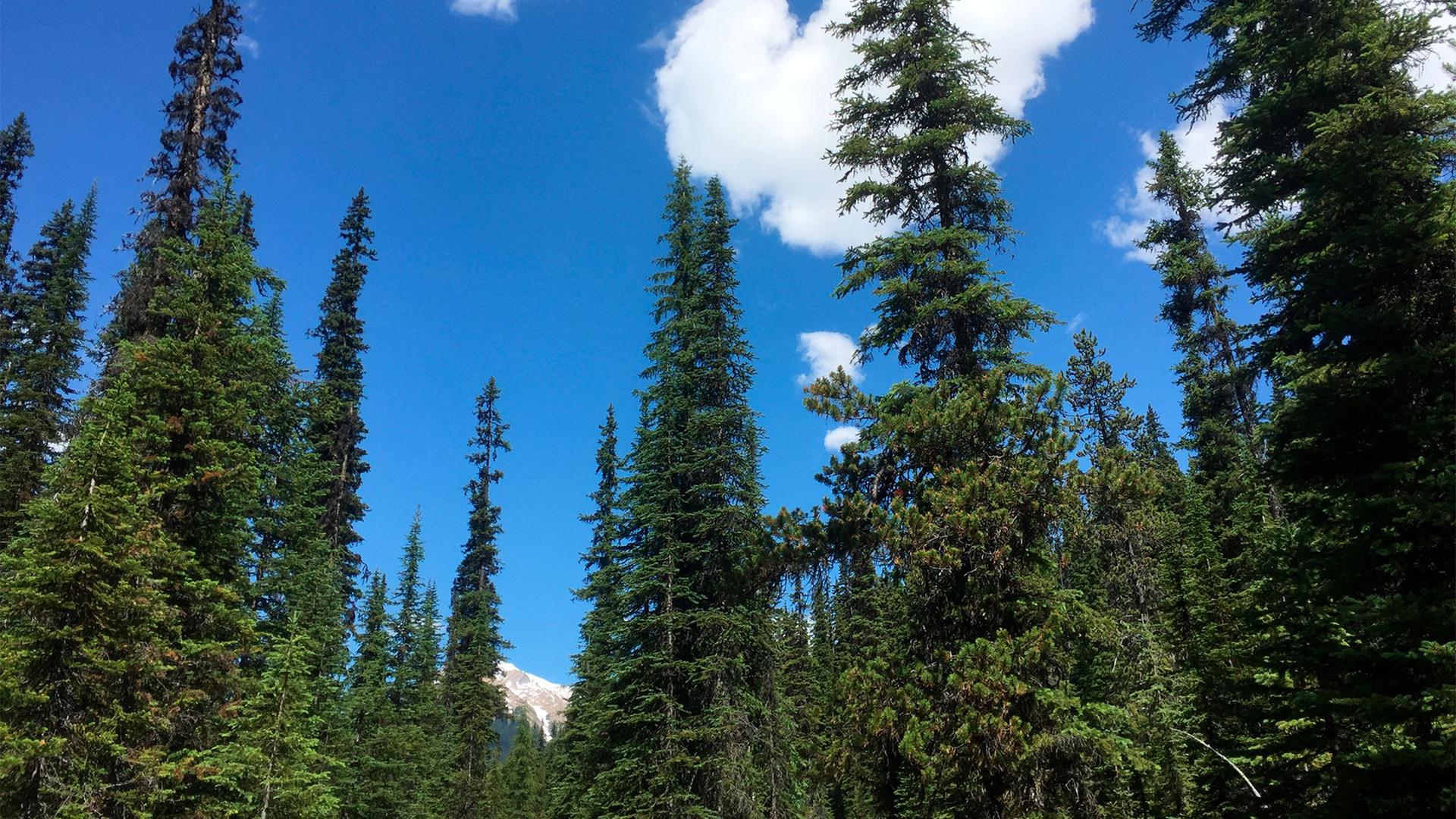In their native Austria, Andrea Stader and Gareth Smith would normally cut their Christmas tree on Dec. 24. But after hearing about a shortage of trees this year in their new home country, Canada, they bundled up their 2-year-old, Ben, and headed out to find their tree three weeks early.
Stader said they couldn’t risk missing out.
“That would be very sad. I could not get a fake tree. I love the smell of it. It’s just part of Christmas,” she said.
They found the perfect specimen at the Chickadee Christmas Trees farm near Cambridge, Ontario.
“Not too big, and we like trees that are not perfect,” Stader said.
Related: Are Christmas trees religious? Well, yes … and no.
Alison McCrindle, who owns Chickadee Christmas Trees, said customers have been desperate to find a tree this year.
“We opened last weekend and I had some phone calls, people saying, ‘Do you have any Christmas trees left?’”
McCrindle did have some left, but demand for trees is at an all-time high. It’s a trend that started last year, as people stayed home during the pandemic. But this year, production is down by 20%, according to the Canadian Christmas Trees Association.
Christmas tree shoppers in the United States will also be feeling the shortage. Normally, Canada exports more than 2 million trees to the US. But this year, Canadians are keeping most of the trees they grow for themselves.
Related: For many across Europe, Christmas is ‘canceled’ this year
Extreme weather conditions caused by climate change left tree farmers like Arthur Loewen in Chilliwack, British Columbia, scrambling to salvage their crops.
“In my 50 years of growing Christmas trees, we’ve never had a heat dome. And we’ve never had 29 inches of rain in November, like we did this year.”
“In my 50 years of growing Christmas trees, we’ve never had a heat dome. And we’ve never had 29 inches of rain in November like we did this year. I have never experienced that before. This is totally new,” he said.
Loewen, who runs Pine Meadows Tree Farms, said a lot of trees growing in western Canada were burned to a crisp this summer when temperatures in British Columbia soared to 113 degrees.
“People drive by the road, and they say, ‘Art, what happened to your trees? They’re all brown.’ Yeah, they are, it just looks ugly,” he said.
Related: ‘Canada Day is a reckoning’: Many cancel celebrations as nation mourns Indigenous unmarked graves
Last month, those trees were under 4 feet of water after record floods. On the other side of the country, in Ontario and Quebec, a late spring frost damaged much of the crop there.
The amount of land dedicated to growing Christmas trees is also shrinking, compounding the tree shortage.
Shirley Brennan, executive director of the Canadian Christmas Trees Association, said the average Canadian Christmas tree farmer is about 75 years old. Many tree farms are family businesses, and many farmers are retiring with no one to take over.
In 2011, there were about 2,400 Christmas tree farms in Canada. By 2016, the number had dropped to just under 1,900. Brennan said that represents a loss of about 10,000 acres of cultivation or the equivalent of 10 million trees.
At Chickadee Christmas Trees, McCrindle and her staff did a brisk business, trimming and wrapping trees in the first two weekends of the season. McCrindle said she expected to run out of trees within a few days.
Related: A Canadian company challenges vaccine rules to increase access
“We don’t really like to disappoint, especially longtime customers, and possibly, we will be disappointing some people, because we’re possibly going to close so early,” McCrindle said.
It takes at least 10 years for a tree to grow big enough to be cut down. And McCrindle said that, given the extent of the damage to trees this year, the tree shortage will last for years.
“Because of the time it takes to grow a Christmas tree, it’s not like something you can just change all of a sudden, ‘Oh, let’s plant some more trees and they’ll be ready next year. It’s going to take time for that to change,” she said.
